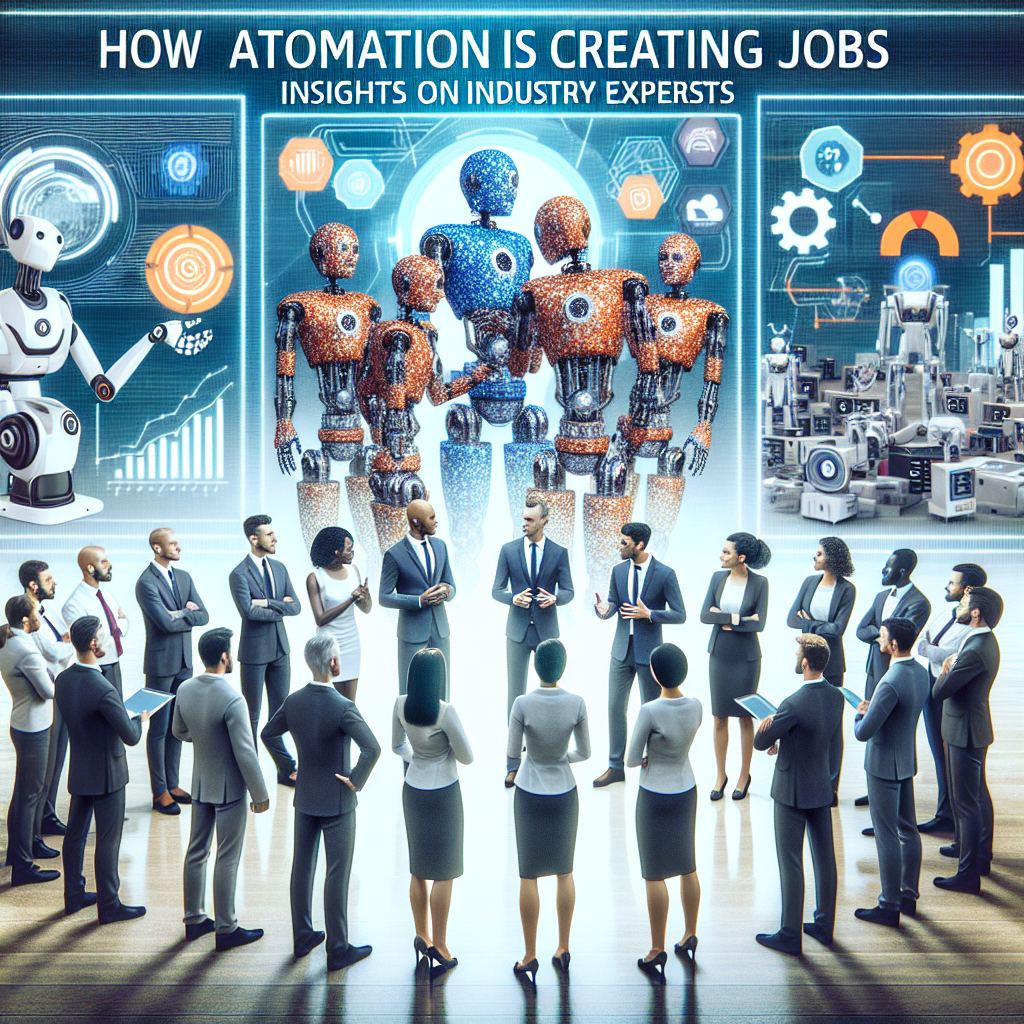In recent years, the rapid advancement of automation technologies has sparked heated debates about their impact on the job market. Concerns about job displacement, wage stagnation, and the future of work are prevalent. However, an emerging narrative is gaining traction: automation is not just a job destroyer but also a job creator. Insights from industry experts reveal a multifaceted perspective on how automation is reshaping the workforce and generating new opportunities.
1. The Job Transformation Paradigm
According to Dr. Michael Houghton, a renowned labor economist at the University of California, "Rather than eliminating jobs outright, automation often transforms existing ones." As robots and artificial intelligence take over routine tasks, workers are freed to focus on higher-level responsibilities. This shift allows employees to engage in more complex, creativity-driven tasks that require critical thinking and emotional intelligence. For example, in manufacturing, while robots handle assembly line roles, there’s an increasing need for automation specialists and data analysts to optimize these systems.
2. Creation of Entirely New Industries
The process of automating operations has led to the emergence of entirely new sectors requiring a skilled workforce. Samira Patel, chief technology officer at an AI-driven logistics company, explains that "The growth of e-commerce and logistics automation has created a surge in job openings, from software developers and data scientists to warehouse managers who can interface with automated systems." As businesses invest in technology, they also generate a demand for support services, maintenance, and innovation, leading to an ecosystem of new job roles.
3. Upskilling and Reskilling Opportunities
One of the most significant benefits of automation, as highlighted by Molly Jenkins, director of workforce development at a national training organization, is the impetus for reskilling workers. "As industries evolve, so too does the skill set required. Companies are now investing in training programs to help employees transition into new roles that automation creates," she notes. Programs that teach digital literacy, software proficiency, and data analysis are becoming essential, enabling workers to transition from declining job roles to new opportunities in the tech-driven economy.
4. The Rise of Hybrid Roles
The convergence of human labor and automation has given birth to hybrid roles—positions that require both technical and interpersonal skills. According to James Reynolds, a senior recruiter in the tech field, "We’re seeing a demand for jobs that blend technology and human interaction, such as customer experience managers who use AI tools to enhance service while maintaining the vital human touch." These roles represent a shift towards jobs that require an understanding of both technology and human behavior.
5. Broader Economic Growth
The integration of automation is also leading to broader economic benefits. Automation can improve efficiency, reduce costs, and increase productivity, which in turn can lead to business expansions and, consequently, job creation. As outlined by economist Dr. Lydia Freeman, "Historically, advancements in technology have correlated with economic growth. The key is ensuring that the workforce is equipped to transition alongside these changes, fostering an environment where new jobs can flourish."
6. Embracing the Future with a Cautious Optimism
Industry experts agree that the narrative around automation and job loss is overly simplistic. Caution is still necessary, as the transition won’t be free of challenges. Policymaker and workforce strategist Tom Fields emphasizes the importance of proactive measures: "Governments and businesses must collaborate to create policies addressing potential job dislocations while simultaneously investing in education and training." An adaptable workforce that is continuously learning will be pivotal in seizing the opportunities that automation presents.
Conclusion
While concerns about job displacement due to automation are valid, the insights from industry experts paint a more optimistic picture of how automation can create jobs. The transformation of existing roles, the emergence of new industries, and the opportunities for upskilling and hybrid positions reveal a workforce that is evolving rather than declining. As we navigate this changing landscape, proactive collaboration among businesses, government, and educational institutions will be essential in harnessing automation’s potential to create a prosperous future for workers. Embracing automation as an opportunity rather than a threat is the first step toward a thriving job market in the age of technology.




